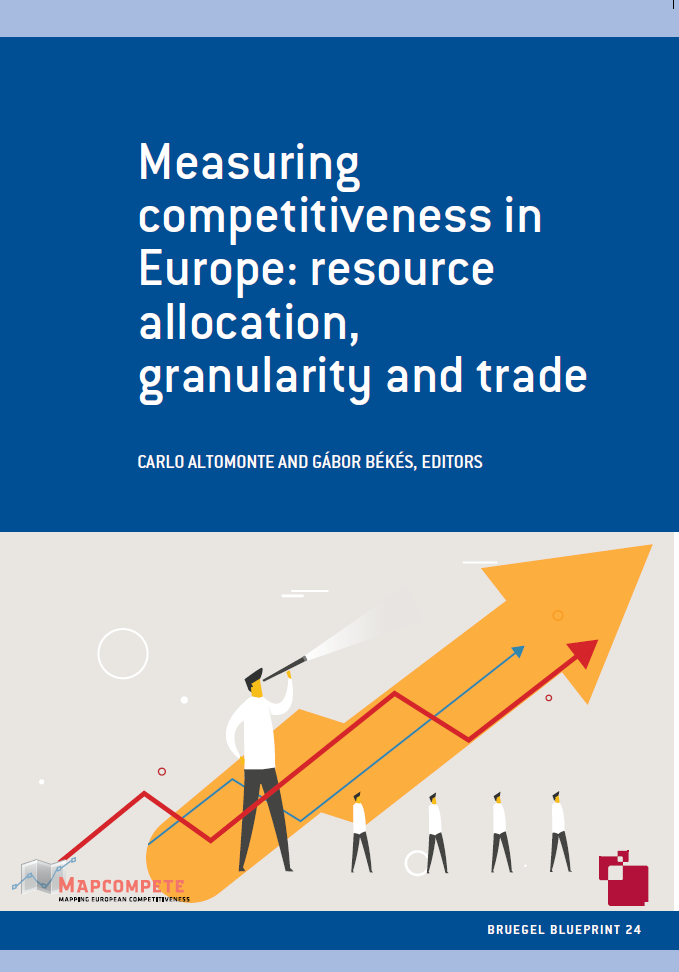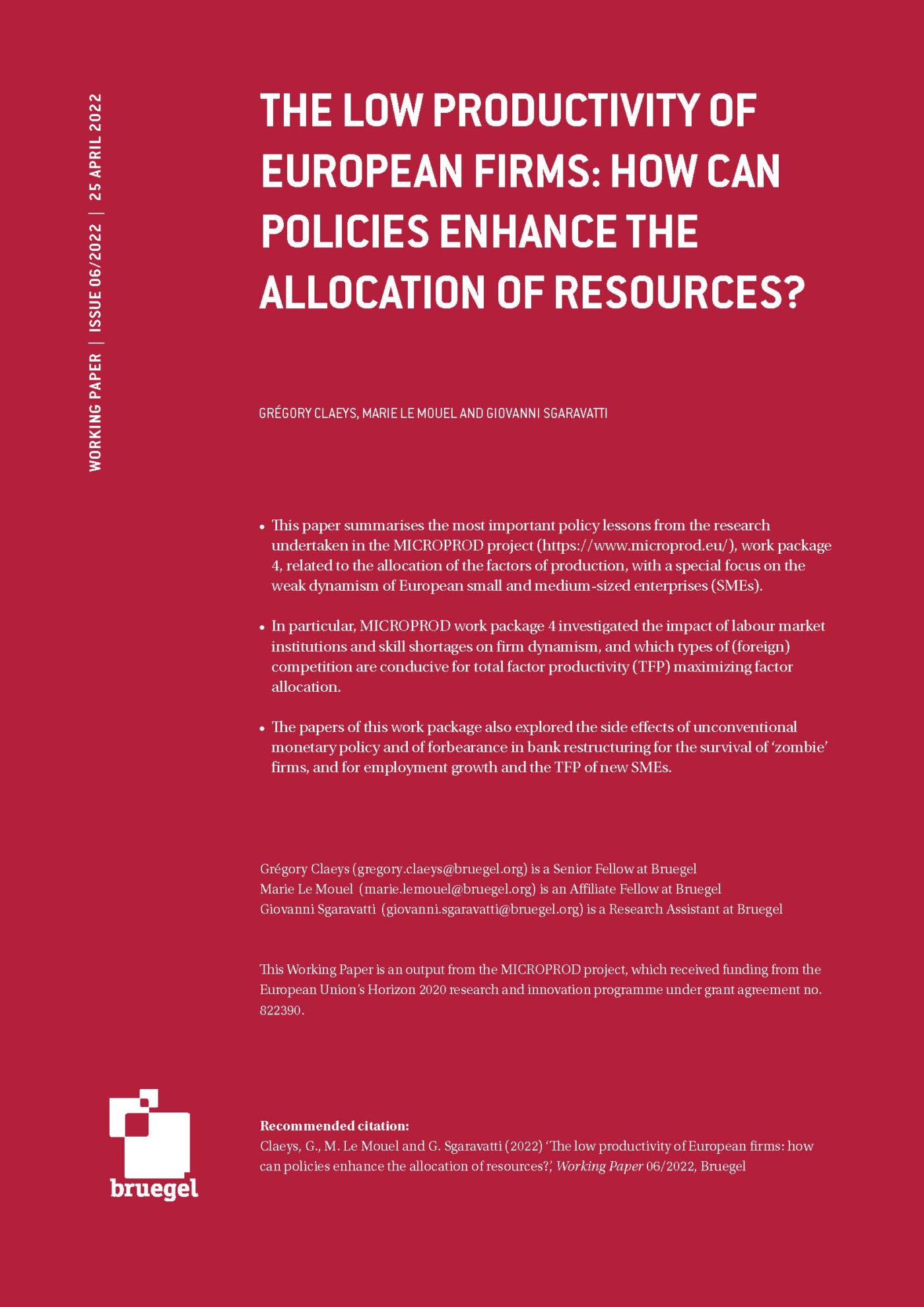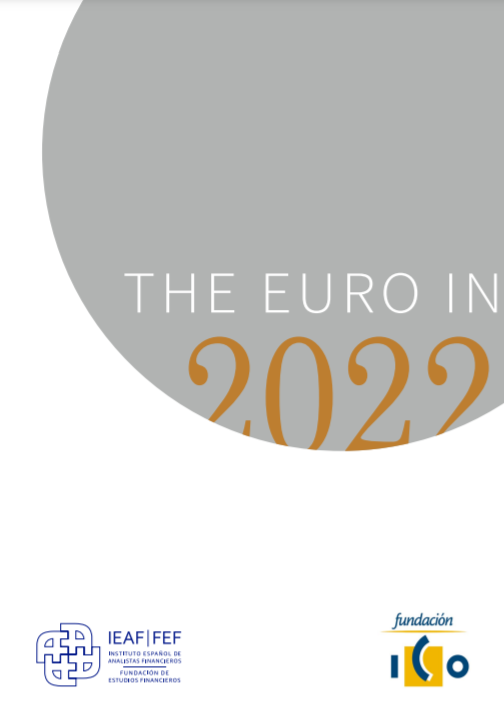Blueprint
Measuring competitiveness in Europe: resource allocation, granularity and trade
This new Bruegel Blueprint provides a differentiated understanding of growth, productivity and competitiveness and the important role public policy needs to play.
Executive summary
One of the most important lessons learned during the 2008-09 financial crisis was that the informational toolbox on which policymakers base their decisions about competitiveness became outdated in terms of both data sources and data analysis. The toolbox is particularly outdated when it comes to tapping the potential of micro data for the analysis of competitiveness – a serious problem given that it is firms, rather than countries that compete on global markets.
This Blueprint provides some concrete examples from recent advances in the analysis of competitiveness. The book is organised around European Central Bank Governor Mario Draghi’s definition of a competitive economy as one in which “institutional and macroeconomic conditions allow productive firms to thrive and in turn, the development of these firms supports the expansion of employment, investment and trade”. This point of view led us to highlight throughout the book the role of a small number of highly-productive firms as drivers of competitiveness at the country and industry level and, associated with that, the relevance for economic growth of the extent to which an economy is able to reallocate labour and capital towards those more-productive firms. Equally important is the context in which these productive firms operate, and thus the significance of developments in international trade and international fragmentation of production through the changing patterns of global value chains.
There are four main implications for policy from the work outlined in the chapters of this Blueprint:
(1) A few large, very productive and internationally active firms have a great influence on the performance and growth potential of countries, regions and sectors. As a result, average measurements, which are the parameters on which most policies are generally based, do a poor job of grasping the actual level of competitiveness within countries (regions) and between them. Hence, similar sets of policy dictated ex-ante by similar average competitiveness measures at the country level (eg unit labour costs) might end up producing very different outcomes ex-post, because of the underlying 1 heterogeneity of firm performance in the different countries.
(2) Rigidities in the labour market affect different firms in different ways and generate a misallocation of resources that has a significant effect on competitiveness and employment. In particular, centralised wage-bargaining institutions seem to be associated with a greater share of companies reducing the number of employees during economic downturns. Labour market reforms that allow wages to be aligned to heterogeneous levels of firm productivity are thus key to fostering a proper allocation of economic resources and, through this channel, a significant improvement in competitiveness and growth.
(3) Exporting, and more broadly international activities, is another key feature of competitiveness. Being active on global markets is closely associated with innovation and growth. An important element for national competitiveness is the extent to which institutional conditions allow firms that are currently not exporting to grow to levels of productivity that enable them to tap into international markets. In addition to exporting to unrelated parties, the emergence of global value chains suggests that selling to multinationals at home or the ability to build up a chain of suppliers are equally important and policy-relevant channels. In turn, as the changing pattern of global value chains is a significant driver of export growth, it is important to work at both the multilateral and bilateral level (eg the Transatlantic Trade and Investment Partnership, TTIP) to foster trade facilitation and the reduction of non-tariff barriers.
(4) The chapters of this book relied on either novel datasets, or novel analytical methodologies, or both, and contributed to the development of measures on which future analyses might be based. Developing datasets using firm-level data, matching company information with trade data, deriving evidence about global value chains or elaborating the quality of products will all help better identify competitiveness. Harmonisation of national efforts, and creation of EU-wide datasets are crucial in order to develop and test new measures that policymakers can use in the future.










